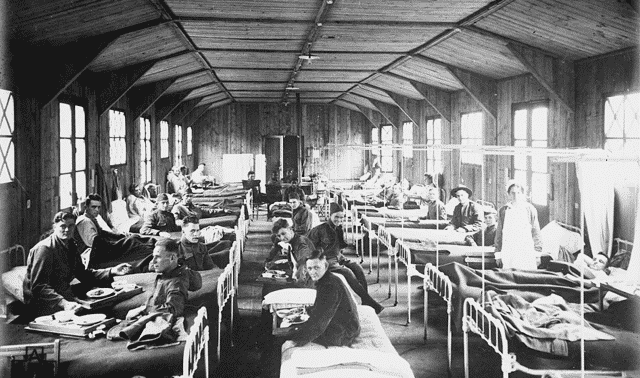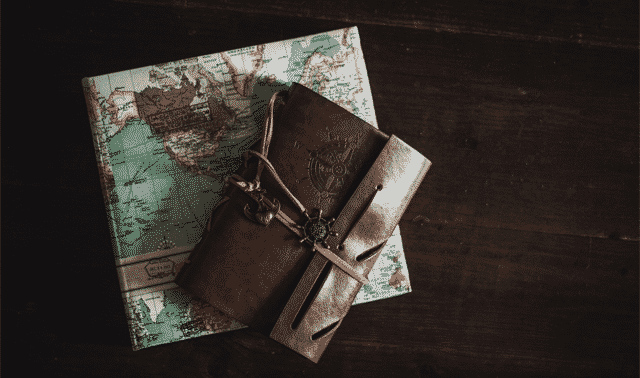Sign up for the Family Tree Newsletter Plus, you’ll receive our 10 Essential Genealogy Research Forms PDF as a special thank you!
Get Your Free Genealogy Forms
"*" indicates required fields
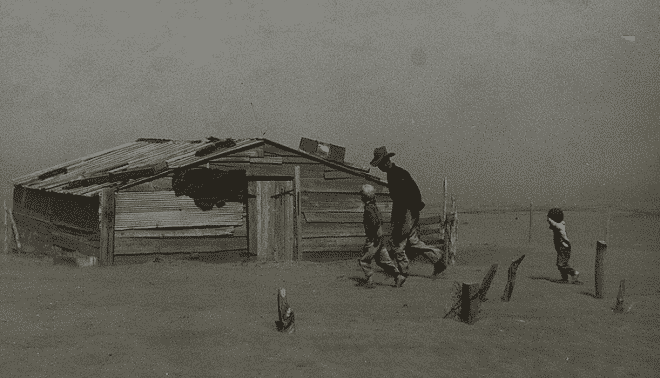
Our preoccupation with the weather has made 24/7 forecasting a hit. Everyone wants to know what it’ll be like tomorrow — and in 50 years, now that global warming is a hot topic. Weather is a worldwide subject of daily conversation, and it’s a reliable way to fill those awkward silences on elevators.
This obsession with the weather is nothing new. Seafaring merchants, farmers and laborers lived (and sometimes died) by temperature and climatic conditions. While a little rain was an inconvenience, extreme weather could be disastrous — and even change the course of history. A windy squall blew the Mayflower off track, sending its passengers to the coast of New England rather than their intended destination in temperate Virginia. Unprepared for the harsher northern conditions, half the passengers perished that winter.
In your ancestors’ lives, weather events may have led to property loss, migration, occupational change, illness or the death of a loved one. Of course, some disasters still affect us today, having caused genealogical record loss.
Here’s our roundup of how 10 weather events influenced your family history.
Jump to:
1815: The Great September Gale
1816: The Year Without a Summer
1868-1869: Great Lakes Storms
1873-1877: Locust Plagues
1888: Fierce Blizzards
1900: Galveston Hurricane
1925: Tri-State Tornado
1927: Mississippi River Flood
1933-1939: Dust Bowl
1937: Ohio River Flood
Historical Weather Resources
Weather History Timeline
1. The Great September Gale (1815)
Without modern forecasting methods and early warning systems, residents of Saybrook, Conn., were surprised when the first hurricane to strike New England in 180 years came ashore there. Newspaper accounts from the time describe it as a violent storm that toppled church steeples and ripped up fruit trees as far as 85 miles inland. All along the coast from Long Island to New England, wooden shipping warehouses and vessels were flattened or swept out to sea.
In Providence, RI, an 11-foot storm surge combined with the incoming tide to destroy 500 houses and 35 ships, damaging at least a quarter of taxable property in the town. A plaque on the town’s Market House points out the high-water mark. Rhode Island merchant Moses Brown claimed $1 million in losses.
The loss of life was minor for most towns. Newspapers listed ships lost but included few names of people injured or killed. Nature’s fury is visible in Rhode Island painter John Russell Bartlett’s The Great September Gale of 1815. And you can attribute the charming — and sturdy — stone buildings in Providence and other waterfront towns to this great gale.
2. The Year Without a Summer (1816)
In 1815, Mount Tambora erupted in Indonesia, spewing tons of volcanic dust into the air. It floated around Earth’s upper atmosphere, causing a dramatic climate shift worldwide. Crops failed as frosts struck even during the summer of 1816 in New England. Delaware farmers complained about the price of corn for their hogs. Masses of people left the Northeast, seeking better prospects in the Midwest.
American religious revivalists held meetings and formed new sects. Sporadic Sunday worshipers renewed their faith. In the November election, dissatisfied voters replaced 70 percent of the House of Representatives. France and England experienced political unrest, too. Typhoid broke out in Ireland, and starving families fled to America, making 1816 and 1817 the leading edge of famine-related migrations. Poor nutrition contributed to the first worldwide cholera epidemic.
On the bright side, English artist J.W. Turner’s paintings featured the spectacular sunsets caused by the volcanic ash in the air. Read more about this tumultuous period in Volcano Weather: The Story of 1816, the Year Without a Summer by Henry M. Stommel (Seven Seas Press).
3. Great Lakes Storms (1868-1869)
North America’s five connected “inland seas” are prone to sudden, severe storms, especially during late autumn, when still-warm water fuels “November gale” fronts. In 1868 and 1869, Great Lakes storms sank or ran aground more than 3,000 ships and killed in excess of 500 people.
After one of the worst — a four-day storm beginning Nov. 16, 1869 — Americans realized the need to notify merchants and residents of future weather events. In those few days, 97 vessels suffered damage; 35 were total losses that by some accounts exceeded $420,000. Newspapers reported heavy snow. High winds broke telegraph poles in Chicago and made rescuing sailors difficult. Nov. 20, six men drowned near Chicago trying to reach a schooner.
The economic impact and loss of life during the two years prompted President Ulysses S. Grant to sign into law the “storm signal service,” predecessor of the US Weather Service, Feb. 9, 1870. The Army would record the weather at sites across the country and telegraph warnings when surface air pressure began to drop.
4. Locust Plagues (1873-1877)
The timing of easterners’ migration into the Great Plains coincided with devastating swarms of locusts. The insects, really a species of grasshopper in swarming phase, mainly stayed in the Rocky Mountains until a jet stream facilitated movement to the Plains, where heat helped them breed.
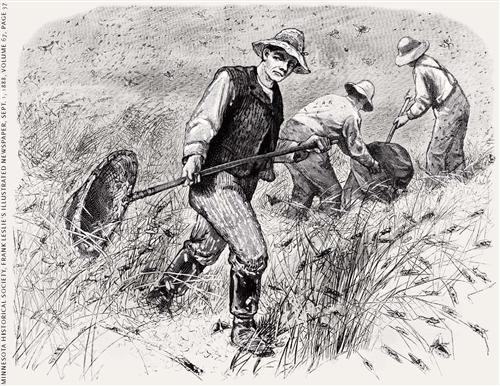
The hungry scavengers devoured all crops in their path and sometimes, fences, blankets and wool. When the food was gone, the swarms moved on in a flying cloud. Insects caused an estimated $200 million in crop damage in Colorado, Wyoming, Nebraska and elsewhere. In Minnesota, where author Laura Ingalls Wilder witnessed the plague as described in On the Banks of Plum Creek, locusts destroyed more than 13 million bushels of wheat and 7 million bushels of oats. “The rasping whirring of their wings filled the whole air,” wrote Wilder, “and they hit the ground and the house with the noise of a hailstorm.”
The largest swarm, recorded in 1874, covered 198,000 square miles. A report that year showed only one family in 10 had enough food for the winter. The government relaxed Homestead Act residency rules so settlers could seek temporary work elsewhere. In 1875, Uncle Sam spent $30,000 on seeds for farmers. Less than 30 years later, locusts mysteriously died out.
5. Fierce Blizzards (1888)
In mid-January, with temperatures above freezing in the Plains states, people worked outside in shirt sleeves and schoolchildren left their coats home. Then a surprise blizzard struck Montana, Dakota Territory and Nebraska Jan. 12 and 13. The temperature suddenly dropped to -20 degrees Fahrenheit. Known as the Children’s Blizzard, the storm caught students in classrooms and farmers in fields. Hundreds lost their lives trying to get home, and thousands of cattle froze to death. It you had a relative in the area who died, David Laskin might’ve mentioned him in The Children’s Blizzard (Harper Perennial).
An unusual cold snap in the Pacific Northwest and California preceded that blizzard, and later in the season, extreme weather also paralyzed the East Coast. There, it had been a warm winter with below-normal precipitation — then March 12 and 13, the Great Blizzard dropped 40 to 50 inches of snow on New York, New Jersey, Connecticut and Massachusetts. About 400 people died, railroads shut down, ships were grounded and imports stopped. Blizzard: The Great Storm of ’88 by Judd Caplovich (Vero Publishing) details the storm and its aftermath.
6. Galveston Hurricane (1900)
Galveston’s location on a low-lying barrier island off the Texas coast leaves it vulnerable to storms, particularly the 1900 hurricane. On Sept. 8, the day it struck, Galveston was the wealthiest city in Texas and the third richest in the country. When it was over, few buildings remained and a fifth of its population was dead.
Weather bureau forecasters thought the hurricane was headed for the Atlantic Coast. By the time it hit Galveston, the destruction of bridges to the mainland prevented islanders’ escape. Weather Service instruments had blown away, but estimated 135-mph winds at landfall make it the equivalent of a Category 4 storm. Water swept away buildings as far as six blocks inland and splintered the rest of the town. Between 6,000 and 10,000 people died. Rescuers dumped bodies at sea; when many washed back, they built funeral pyres. Find a list of the recorded dead, as well as photos and oral histories, on the Galveston and Texas History Center website.
Property losses totaled $28 to $30 million ($700 million today), and Houston replaced Galveston as a major commercial center. Raising the city center covered many graves, and genealogists will find gaps in church and immigration records. The 1900 hurricane remains the country’s deadliest weather disaster.
Case Study: Researching Specific Storms
Q: My great-great-uncle was killed in a tornado March 5, 1919, in Eufaula, Ala. How can I learn more about the storm?
A: Some National Weather Service forecast centers have pages about local tornado history. The Birmingham office, for example, has a database of Alabama tornadoes dating back to 1794. You’ll find details and maps about storms such as the 1919 Eufaula supercell. Of course, you also can read contemporary accounts in historical newspapers, such as the Eufaula Tribune. A tornado that caused several deaths would’ve been written up in the state’s larger newspapers, such as the Montgomery Advertiser (searchable from 1901 to 1922 at GenealogyBank.com). And don’t overlook local histories, such as the 1930 History of Eufaula, Alabama, available on Ancestry.com; an account of the tornado begins on page 162.
Answer provided by David Fryxell, from the October/November 2014 Family Tree Magazine.
7. Tri-State Tornado (1925)
Over three and a half hours March 18, a tornado averaging a quarter-mile wide, but at times growing to a mile, left a 219-mile path of destruction in Missouri, Illinois and Indiana. It’s the farthest-traveling and deadliest tornado in US history, killing at least 689 people and injuring more than 2,000. From Ellington, Mo., the twister sped across the southern tip of Illinois almost to Petersburg, Ind. Fooled by the low, “rolling cloud” appearance, many didn’t sense the danger in time. Among the 234 who died in Murphysboro, Ill., were 17 children at the Longfellow School. Four towns were demolished. In total, 13 counties and 19 communities felt the effects.
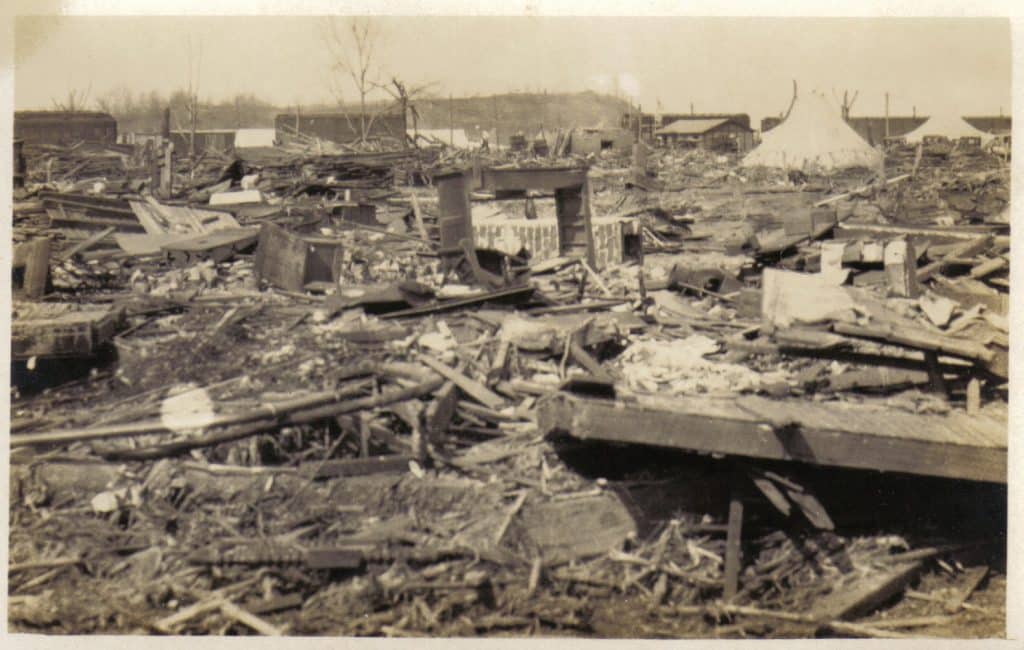
In addition to the $16.5 million in damage from the tornados, fire and theft increased the magnitude of economic disaster. The same weather system spawned deadly twisters in Kentucky, Tennessee and other states. Read more in The Tri-State Tornado: The Story of America’s Greatest Tornado Disaster by Peter S. Felknor (Iowa State University Press). You’ll find links to lists of those killed at <rootsweb.com/~ilfrankl/subjects/tornado.htm>.
8. Mississippi River Flood (1927)
Weeks of rain created the one of most destructive river floods in US history when the Mississippi River topped levee systems the Army Corps of Engineers had just proclaimed would withstand rising waters.
The worst breach happened April 21 at Mounds Ferry, Miss., just upriver from Greenville. Armed guards forced African American laborers to fill sandbags, though everyone could feel the levee was about to collapse. Trees, buildings and railroad embankments washed away. The entire Mississippi Delta was flooded.
More than 10,000 refugees, mostly black, crowded onto the 8-foot-wide Greenville levee. Fearing loss of their labor force, planters allowed only 33 white women and children to board evacuation barges. Red Cross provisions were distributed disproportionately. Town leadership conscripted black cleanup workers at gunpoint. Relief director and presidential hopeful Herbert Hoover suppressed his own investigators’ reports of refugee camp abuses.
The floods killed 1,000 and left a million homeless. African Americans moved north in droves. Within a year, half the Delta’s black population had gone. Learn more in John M. Barry’s Rising Tide: The Great Mississippi flood of 1927 and How It Changed America (Simon & Schuster) and at <www.pbs.org/wgbh/amex/flood>.
9. Dust Bowl (1933-1939)
As the Great Depression intensified, drought and decades of overfarming in the Southern Plains dried out the topsoil and a series of storms from 1933 to 1939 blew it eastward. May 11, 1934, in one of the worst events, dirt fell like snow on Chicago. On Black Sunday, April 14,1935, 20 “Black Blizzards” darkened skies.
According to The Yearbook of Agriculture for 1934, “Approximately 35 million acres of formerly cultivated land have essentially been destroyed for crop production & 100 million acres now in crops have lost all or most of the topsoil; 125 million acres of land now in crops are rapidly losing topsoil.” By 1940, about 2.5 million “Okies” had left Oklahoma, Texas, Kansas and other states. Many went to California, where they moved from farm to farm seeking work. In 1937, California made it illegal to bring indigent persons into the state.
John Steinbeck captured the migrants’ plight in his novel The Grapes of Wrath. You can get nonfiction accounts and photos in Letters from the Dust Bowl by Caroline Henderson (Red River Books) and at PBS’ American Experience: Surviving the Dust Bowl <www.pbs.org/wgbh/amex/dustbowl>.
10. Ohio River Flood (1937)
Ohio’s wettest month on record raised Ohio River levels in January, flooding cities along its course. As happened 10 years before on the Mississippi, levees broke and muddy water deposited silt in houses and streets. Ten percent of Cincinnati, where the river peaked at 79.9 feet, was submerged for up to 19 days. Gas tanks exploded, power was shut off and taps ran dry.
Six counties in Indiana saw damages costing upward of $13 million. There, 4,000 WPA workers helped relief efforts. Evansville Courier reporter John A. Ellert wrote, “Braving cold winds, rain, snow and sleet, WPA crews worked through the flood at jobs hazardous and unpleasant, mostly in cold and water.” Watch video of their work at <www.indiana.edu/~liblilly/wpa/flood.html>
In the midst of struggles with the Great Depression and the Dust Bowl, a million people were left homeless and 385 dead. In all, the flood wrought around $500 million in damage. Rick Bell details the deluge in The Great Flood of 1937: Rising Waters, Soaring Spirits (Butler Books).
These events demonstrate the part Mother Nature could play in our ancestors’ lives. Read up on weather occurrences your relatives witnessed, and you might discover droughts or flooding prompted a move, or that your brick-wall ancestor died in a storm.
Historical Weather Resources
Websites
- 10 Non-Military Historical Events Drastically Changed by the Weather
- Benjamin Franklin: Weather Wise
- Flood of 1927: Encyclopedia of Arkansas
- GenDisasters
- History of the National Weather Service
- Ohio River Flood of 1937
- The Tornado Project
- YouTube: United States and the Great Depression
Books
- Blame It on the Rain: How the Weather Has Changed History by Laura Lee (Harper Paperbacks)
- F5: Devastation, Survival, and the Most Violent Tornado Outbreak of the 20th Century by Mark Levine (Miramax)
- The Great Hurricane: 1938 by Cherie Burns (Grove Press)
- Great New England Storms of the 20th Century by editors of the Boston Globe (Boston Globe)
- The Little Ice Age: How Climate Made History, 1300-1850 by Brian M. Fagan (Basic Books)
- Rising Tide: The Great Mississippi Flood of 1927 and How It Changed America by John M. Barry (Simon and Schuster)
- Significant Tornadoes 1680-1991 by Thomas P. Grazulis (Environmental Films)
- Storm Warning: The Origins of the Weather Forecast by Pauline Halford (Sutton)
- Storm Watchers: The Turbulent History of Weather Prediction from Franklin’s Kite to El Nino by John D. Cox (Wiley)
- Sudden Sea: The Great Hurricane of 1938 by R.A. Scotti (Back Bay Books)
- Tornado Alley: Monster Storms of the Great Plains by Howard B. Bluestein (Oxford University Press)
- The Weather Factor: How Nature Has Changed History by Erik Durchmied (Arcade Publishing)
- The Worst Hard Time: The Untold Story of Those Who Survived the Great American Dust Bowl by Timothy Egan (Mariner Books)
Weather History Timeline
1588
England triumphs over the Spanish Armada due in part to high winds, and becomes a 16th-century superpower
1747-1748
Many areas of the United States experience their highest recorded snowfall
1750
Benjamin Franklin publishes a proposal for an experiment to prove lightning is electricity
1758
Benjamin Franklin stops printing Poor Richard’s Almanack
1780
The Great Hurricane of 1780 hits in the Caribbean, destroying British and French fleets and killing an estimated 22,000
1792
The first issue of the Farmer’s Almanac is published
1841
President William Henry Harrison gives his inaugural address outdoors without a coat, and dies of illness a few weeks later
1845
Rain in Ireland exacerbates the Great Potato Famine and encourages emigration
1849
Joseph Henry, secretary of the Smithsonian, creates a telegraphic network of meteorological volunteers
1873
The US Army Signal Corps issues its first hurricane warning
1889
Heavy rains collapse the dam at Johnstown, Pa., killing more than 2,000
1927
Floods cause devastation and social upheaval in states all along the Mississippi River
1938
Hurricane strikes New York and New England, destroying coastal summer communities
2005
Hurricane Katrina strikes New Orleans, cripples the Gulf Coast and spurs mass migration from the area
From the May 2008 Family Tree Magazine.
FamilyTreeMagazine.com is a participant in the Amazon Services LLC Associates Program, an affiliate advertising program designed to provide a means for sites to earn advertising fees by advertising and linking to Amazon.com and affiliated websites.
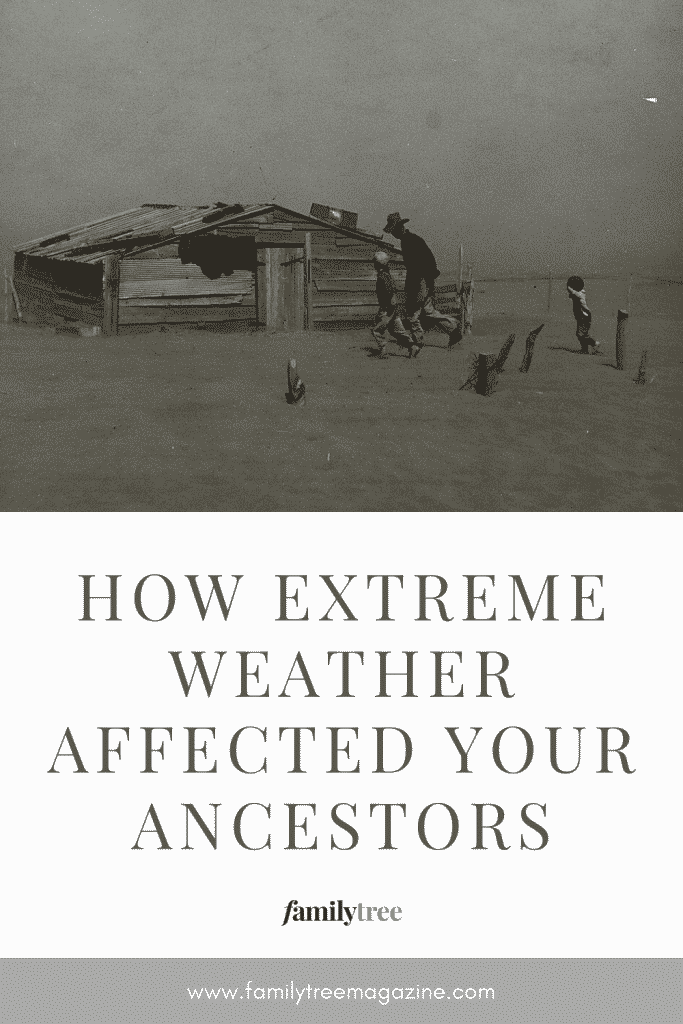
ADVERTISEMENT

